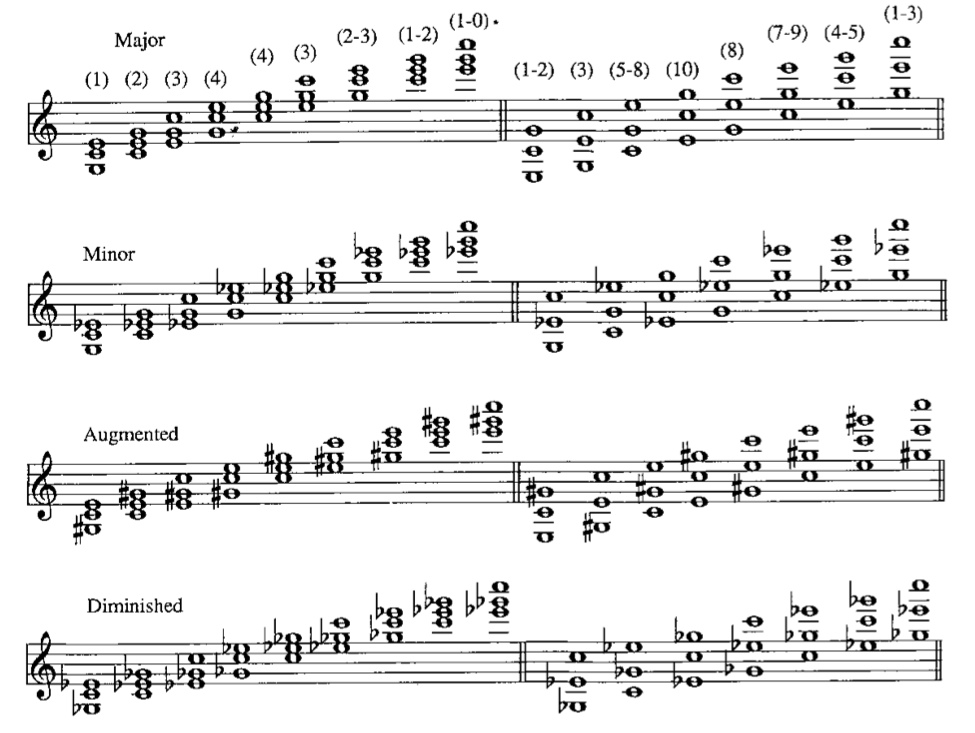Mick Goodrick Triads
30 September 2013
If you aren't familiar with Mick Goodrick's guitar method, you're missing out. His book The Advancing Guitarist is one I've come back to again and again since I bought it 25 years ago (!) after reading his amazing articles in Guitar Player magazine in the 80s. This book is well known to many, so I won't belabor what so many before me have said, but to sum up: this is the rare (RARE) book that continues to give back no matter how many times one revisits. The only truly humble guitar book I own.
I've been diving deep into his triad material beginning on p. 39 for the last 2 weeks, and have had a series of epiphanies, simply taking some hours and doing exactly as Mick suggests. He begins this section by reiterating fundamental music theory around triads - root position, and 1st and 2nd inversions. One page later, the reader is invited to
go ahead and learn all C major, C minor, C augmented and C diminished triage, all inversions, all registers, all locations, in closed as well as spread voicings that follow.
Four staffs lay out the voicing verbosely:

After revisiting my voicings, and practicing the triad row exercise on the following page, I've found a groove in voice leading through what initially sound like arbitrary progressions. Mick lays out a 48 item 'triad row', using every permutation of maj/min/aug/dim across the 12 possible roots, then generates progressions ala circle of fifths, but with varying intervals. I've been struck by how interesting these progression can sound, particularly playing with how you apply the type of triad. Here are the roots according to consistenly applied intervals (all on C):
Min 2nd:
C C# D D# E F F# G G# A A# B C
Maj 2nd:
C D E F# G# A# C
Min 3rd:
C Eb Gb A C
Maj 3rd:
C E G# C
Perfect 4th (circle of fourths):
C F Bb Eb Ab Db Gb B E A D G C
Tritone :) :
C F# C
Perfect 5th:
C G D A E B F# C# G# D# A# F C
Minor 6th:
C Ab E C
Major 6th:
C A F# D# C
Minor 7th:
C Bb Ab Gb E D C
Major 7th:
C B A# A G# G F# F E D# D C# C
You don't have to use the same interval every time, of course. Mick alternates between maj and min 3rds. You can alternate between as many or few intervals as you like. How about:
Major 3rd, perfect 5th: C E B D# A# D A C# G# C G B F# A# F A E G# D# G D F# C# F C
Applying the 4 triad types to these progressions in a serial fashion yields some interesting results. I've been generating progressions (whether randomly ala Mick's Triad Row, or with some recipe as above) and applying the triad types, THEN voice leading through the results using one set of 3 strings.
For example:
My progression:
C E B D# A# D A C# G# C G B F# A# F A E G# D# G D F# C# F C
My triad series:
M m M m + o M o M +
yields:
C Em B D#m A#+ Do A C#o G# C+ G Bm F# A#m F+ Ao E G#o D# G+ D F#m C# Fm C
I pick 3 strings (D, G and B strings, here), and voice lead through my triads. A bit of a workout first time through, but interesting results come from diving deep.
Comments powered by Talkyard.